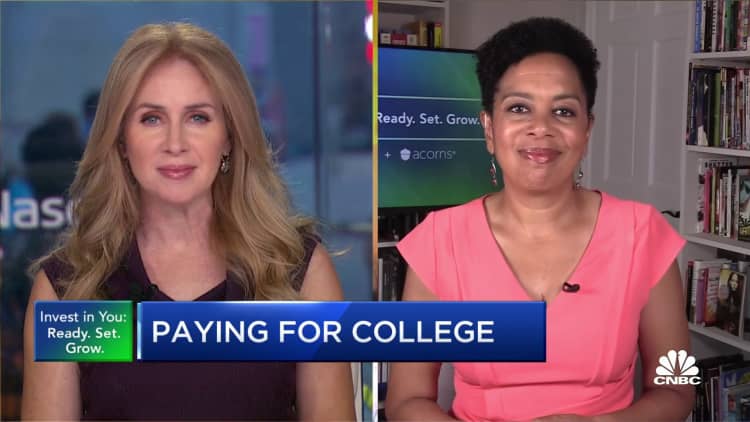
A new Free Application for Federal Student Aid soft launched over the holiday weekend with much anticipation after a long delay.
However, for now, the 2024–25 FAFSA form is only available for short periods of time as the U.S. Department of Education works to “resolve minor issues,” according to a department spokesperson.
This soft launch period and pauses will allow for “updates to the form as needed,” the department said. Still, “thousands of people successfully completed their application while we monitored performance in-real time.”
More from Personal Finance:
The first step to setting an annual budget
This strategy can help you meet New Year’s resolution goals
Fewer students are enrolling in college
Higher education expert Mark Kantrowitz aimed to test out the new site over the weekend, to no avail.
“I have not been able to submit the form, and I’ve heard from no students who have been able to submit the form,” he said Monday.
Indeed, the form was only available briefly over the holiday weekend: a 30-minute window on Dec. 30, a 30-minute window on Dec. 31, and a two-hour window on Jan. 1, according to the Department of Education.
As of Tuesday, the site remained open for a longer stretch and more than 30,000 applications were successfully submitted, the Department said. During that time, Kantrowitz was also able to submit a form, he said.
Some 17 million students file the FAFSA each year
A plan to simplify the FAFSA has been years in the making. In 2020, the Consolidated Appropriations Act was passed to streamline the process and overhaul dozens of systems, some of which have not been updated in almost 50 years. Those changes are finally going into effect.
In ordinary years, the FAFSA form is used by more than 17 million students and roughly 5,500 colleges and universities in all 50 states, according to the Department of Education.
They had to have something available even if it wasn’t ready for prime time.
Kalman Chany
author of The Princeton Review’s “Paying for College”
The FAFSA serves as the gateway to all federal aid money, including federal student loans, work study and especially grants — which have become the most crucial kind of assistance as college costs soared because they typically do not need to be repaid.
What FAFSA delays mean for college-bound students
Kalman Chany, a financial aid consultant and author of The Princeton Review’s “Paying for College,” advises students and families not to panic if they cannot file the FAFSA during the soft launch.
“If you are having access issues, it is better to wait,” he said. “They had to have something available even if it wasn’t ready for prime time.”
If students do submit a completed 2024–25 FAFSA form early this year, that information won’t be sent to schools until late January, the Department of Education also said, “so you will have ample time to fill out the form and do not need to rush to complete the form during the soft launch.”
Because of the postponement, colleges might still be able to get financial aid award offers done by late March or early April, according to Kantrowitz. “Otherwise, it will be a complete disaster,” he said.
“Families will not be able to get financial aid offers in a timely manner. Already, students who applied early action or early decision do not have award offers.”
What’s changed with the new FAFSA
Not only has the timing changed, but the simplified form now also uses a calculation called the “Student Aid Index” to estimate how much a family can afford to pay.
Under the new system, more low- and moderate-income students will have access to federal grants, but the changes will reduce eligibility for some wealthier families.
And, as part of the FAFSA simplification, families will no longer get a break for having multiple children in college at the same time, effectively eliminating the “sibling discount.”
For now, the new FAFSA also relies on old consumer price index figures from 2020, which don’t account for the recent runup in inflation. That could mean many students “will get less financial aid than they deserve,” Kantrowitz said.
“It is a pretty big deal,” he said. “We are talking about thousands of additional dollars that families will have to pay for college.”
All families of four in this application cycle with adjusted available income of more than $35,000 will be affected by the failure to make inflationary adjustments, with middle- and higher-income students the hardest hit, according to Kantrowitz.
There will be less of an effect on lower-income students whose expected family contribution was already $0.
For example, a typical family in New York with adjusted available income of $100,000 could be expected to contribute $12,943 instead of $9,162 toward their annual college costs — a difference of nearly $4,000 in aid, according to calculations by Kantrowitz.
Don’t miss these stories from CNBC PRO:

